 If you wander into a bookshop and look at the section on Leeds United AFC, the shelves will invariably be loaded with titles which hark back to the Revie era and the exploits of his teams of the 1960s and 70s. Whilst those trophy winning days at Elland Road put the West Yorkshire club onto the footballing international stage, they were not the last Leeds team to bring the League title back to LS11. In 1991/92 under Howard Wilkinson, Leeds took the First Division title by four points from Manchester United, yet the story seems to have been fairly much passed over. In The Last Champions (Leeds United and the year that football changed for ever), Dave Simpson has brought that extraordinary season to life.
If you wander into a bookshop and look at the section on Leeds United AFC, the shelves will invariably be loaded with titles which hark back to the Revie era and the exploits of his teams of the 1960s and 70s. Whilst those trophy winning days at Elland Road put the West Yorkshire club onto the footballing international stage, they were not the last Leeds team to bring the League title back to LS11. In 1991/92 under Howard Wilkinson, Leeds took the First Division title by four points from Manchester United, yet the story seems to have been fairly much passed over. In The Last Champions (Leeds United and the year that football changed for ever), Dave Simpson has brought that extraordinary season to life.
Simpson currently writes for the Guardian and had before that written for Melody Maker, with his previous foray into books a title about the band The Fallen. Away from music Simpson contributed to the official club magazine LeedsLeedsLeeds.
In terms of this book, The Last Champions, the title reflects a number of facts that at the start of the 2012/13 season still hold true. When Leeds United won the First Division title in 1991/92 it was the last time before the monster that is the Premier League took over the top division of English football and therefore Leeds will always be the last First Division Champions. Howard Wilkinson is the last English manager to win the title and that season was the last occasion when Leeds United were the Champions of England; who knows when these two facts will alter?
In telling the story of ‘Sergeant Wilko’ and his team, Simpson seeks out the players and staff who were part of that incredible season. Therefore the majority of the book features chapters which are set around interviews with the central characters of the Wilkinson era prior to and including the 1991/92 season. These include Wilkinson, his assistant Mick Hennigan, physio Alan Sutton, board members Leslie Silver and Bill Fotherby and players such as the late Gary Speed (to whom the book is dedicated), Vinnie Jones, John McClelland, Chris Kamara, Mike Whitlow, Chris Whyte, Lee Chapman and Jon Newsome.
The various chapters provide interesting anecdotes from within the dressing room, the training ground and ‘on and off’ the pitch. However, there are a number of themes that emerge time and time again. Wilkinson is portrayed as a disciplinarian who drilled into his players the benefits of organisation and structure in training until it became second nature on the pitch. He was also seen as ahead of his time in areas such as match preparation including a more modern approach to diet and nutrition for players. However, Wilko was by no means perfect and some players questioned his man management skills, in particular the manner in which so many of the squad left Elland Road. What also comes through is that in comparison with the current Premier League era ‘stars’, the players back then were just ‘ordinary’ guys, with many of them today doing ‘regular’ jobs.
Simpson also seamlessly weaves in his own story of growing up in Leeds and his attachment to the club. He admits as a child, he “…never really liked football…” because of his uncomfortable experiences of playing the game in the school playground. But, after seeing Leeds beat Arsenal 2-0 in October 1974, Simpson “…was hooked immediately…” However, his first love music still tugged at his heart strings and as football in the late 70s suffered at the hands of hooliganism and racism, so he swapped Elland Road for various music gigs. It wasn’t until Wilkinson arrived in 1988 that Simpson returned to LS11 to witness the revolution that saw Leeds take the Second Division title in 1989/90 and the top prize just two seasons later. He ends the book with a brief look at the first season of the Premier League and the end of the Wilkinson era.
This book is a fine tribute to the period Wilkinson was in charge at Leeds and the players and staff that saw them crowned as English Champions. Simpson’s journalistic style, one which never loses the feeling that he a fan, makes this a fascinating read, which is difficult to put down. There is also something ethereal and melancholic about the book. Whilst the pages celebrate that period of the Wilkinson era, the words and images have an underlying feel of a time gone-by. Perhaps it was because it was the last season prior to the Premier League and for Sky football never existed before that point and consequently those last First Division Champions are merely ghosts from the past. Football has become a different beast in the Sky era, where money is ‘king’ and the players, like television hold the clubs to ransom. Like Simpson, I remember growing up and watching football in the 70s when it was affordable. For many nowadays that is not true and that is a sad fact.
For me the pictures also say so much. The images used within the book are not colour or on glossy pages, but are black and white, with a grainy quality; unassuming and understated. Finally, check out the images used on the sleeve of the book. On the front the Leeds team celebrate with the trophy, most of whom are caught in the moment of triumph. Then look at the faces of Gary Speed, David Batty and Mel Sterland. These three seem somewhere else. Maybe the picture has just caught them off guard? What were they thinking about? On the back, Wilkinson is seen walking away (back to the camera) carrying the Championship trophy with Elland Road empty. To use a melancholic musical refrain, “those were the days my friend…”.
To read an interview with Dave Simpson and another review, please click here.
 Northern Monkeys was first published by ThinkMore in 2012 with the limited edition run, selling out. Given this success a second edition was published in 2013 which contained some addition material. This review is based on the latest edition.
Northern Monkeys was first published by ThinkMore in 2012 with the limited edition run, selling out. Given this success a second edition was published in 2013 which contained some addition material. This review is based on the latest edition.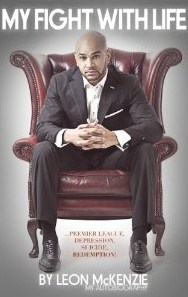 Robert Enke (2009), Dale Roberts (2010), Gary Speed (2011) – three men from the world of football who in recent years took their own lives. That list has nearly been added to by ex-players such as Dean Windass and the author of My Fight with Life, Leon McKenzie, who have both attempted suicide.
Robert Enke (2009), Dale Roberts (2010), Gary Speed (2011) – three men from the world of football who in recent years took their own lives. That list has nearly been added to by ex-players such as Dean Windass and the author of My Fight with Life, Leon McKenzie, who have both attempted suicide. With the advent of books about football terrace culture in the late 1990’s from writers such as John King and more recently Dougie Brimson, this genre has gradually gained an acceptance and recognition in the literary world. Chris Brown is a Bristol Rovers fan, who in the 1970’s was a skinhead on the terraces in the Tote End at Eastville (Rovers home ground up until 1986), who detailed his experiences, the music and fashion of the time in his autobiographical book Bovver (published 2001); it was subsequently updated and released in 2009 as Booted and Suited. Following on from the success of these books, Chris Brown has written his first novel, Guilty Tiger, which draws on his Bristol roots and some of the themes of his earlier work.
With the advent of books about football terrace culture in the late 1990’s from writers such as John King and more recently Dougie Brimson, this genre has gradually gained an acceptance and recognition in the literary world. Chris Brown is a Bristol Rovers fan, who in the 1970’s was a skinhead on the terraces in the Tote End at Eastville (Rovers home ground up until 1986), who detailed his experiences, the music and fashion of the time in his autobiographical book Bovver (published 2001); it was subsequently updated and released in 2009 as Booted and Suited. Following on from the success of these books, Chris Brown has written his first novel, Guilty Tiger, which draws on his Bristol roots and some of the themes of his earlier work.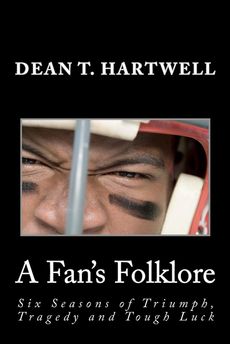 Sport is often held up as a metaphor for life; no matter what the sport, the country that it is played in or whether you experience it as a participant or spectator. Dean T. Hartwell takes his early years watching his beloved Oakland Raiders in the National Football League (NFL) and Los Angeles Dodgers of the Major League Baseball (MLB) to illustrate how they taught him lessons in ways he “…could not have otherwise understood…”
Sport is often held up as a metaphor for life; no matter what the sport, the country that it is played in or whether you experience it as a participant or spectator. Dean T. Hartwell takes his early years watching his beloved Oakland Raiders in the National Football League (NFL) and Los Angeles Dodgers of the Major League Baseball (MLB) to illustrate how they taught him lessons in ways he “…could not have otherwise understood…” Some say football is a metaphor for life, others state that life is a journey; so what does it say if you set yourself the task over a ten month period to complete a 10,000 mile journey on a bicycle watching every single game played by your team (home and away) in the Conference National and FA Cup in the 2009/10 season?
Some say football is a metaphor for life, others state that life is a journey; so what does it say if you set yourself the task over a ten month period to complete a 10,000 mile journey on a bicycle watching every single game played by your team (home and away) in the Conference National and FA Cup in the 2009/10 season? My allegiance is to Fulham, it’s where I was born and they are the team I have supported since my first ‘live’ game in 1972. However, there are teams you get a soft spot for, a club whose results you look out for. That club for me is Wimbledon FC. The first time I went to Plough Lane was in January 1976 for an FA Trophy 1st Round Replay game against Sutton United. I’d never been to watch non-league football, but something that night hooked me in. Over the following years I regularly attended games at Wimbledon when Fulham were away and was fortunate enough to be there for some memorable games, including the victory against Minehead in May 1977 which went a long way to sealing the Southern League Premier Division, the first game in Division Four against Halifax Town in August 1977 and an FA Cup victory over Brian Clough’s Nottingham Forest in January 1985. By the time I left London in August 1991 to live in Leeds, Wimbledon were an established First Division team, but had been forced to leave Plough Lane and were about to start life at Selhurst Park. Not being in the capital, I had to follow the disturbing rumours of The Dons move to Dublin and Milton Keynes from afar, but ultimately didn’t believe that The FA would sanction this most invidious of proposals. However, history tells us that the unfathomable decision came to pass and which subsequently led to the beginning of another chapter in the history of The Dons when AFC Wimbledon were born in 2002.
My allegiance is to Fulham, it’s where I was born and they are the team I have supported since my first ‘live’ game in 1972. However, there are teams you get a soft spot for, a club whose results you look out for. That club for me is Wimbledon FC. The first time I went to Plough Lane was in January 1976 for an FA Trophy 1st Round Replay game against Sutton United. I’d never been to watch non-league football, but something that night hooked me in. Over the following years I regularly attended games at Wimbledon when Fulham were away and was fortunate enough to be there for some memorable games, including the victory against Minehead in May 1977 which went a long way to sealing the Southern League Premier Division, the first game in Division Four against Halifax Town in August 1977 and an FA Cup victory over Brian Clough’s Nottingham Forest in January 1985. By the time I left London in August 1991 to live in Leeds, Wimbledon were an established First Division team, but had been forced to leave Plough Lane and were about to start life at Selhurst Park. Not being in the capital, I had to follow the disturbing rumours of The Dons move to Dublin and Milton Keynes from afar, but ultimately didn’t believe that The FA would sanction this most invidious of proposals. However, history tells us that the unfathomable decision came to pass and which subsequently led to the beginning of another chapter in the history of The Dons when AFC Wimbledon were born in 2002.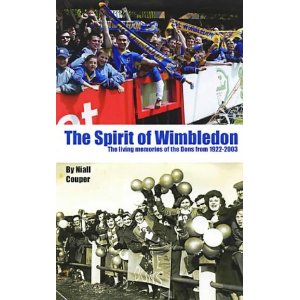 This Is Our Time – The AFC Wimbledon Story by Niall Couper recounts the incredible tale of the rise from the Combined Counties League (CCL) back to the Football League. Couper started following The Dons in 1982 and watched the club at Plough Lane and Selhurst Park. With the release of Charles Koppel’s plan to take Wimbledon to Milton Keynes in 2001, fans looked to boycott official merchandise. An alternative match-day programme, Yellow and Blue, came into existence edited by Couper, which in their inaugural season in the CCL became the ‘official’ club programme for AFC Wimbledon. In addition to this book, Couper was also the author of, The Spirit of Wimbledon – The living memories of the Dons 1922 – 2003. Both books are available from the publisher
This Is Our Time – The AFC Wimbledon Story by Niall Couper recounts the incredible tale of the rise from the Combined Counties League (CCL) back to the Football League. Couper started following The Dons in 1982 and watched the club at Plough Lane and Selhurst Park. With the release of Charles Koppel’s plan to take Wimbledon to Milton Keynes in 2001, fans looked to boycott official merchandise. An alternative match-day programme, Yellow and Blue, came into existence edited by Couper, which in their inaugural season in the CCL became the ‘official’ club programme for AFC Wimbledon. In addition to this book, Couper was also the author of, The Spirit of Wimbledon – The living memories of the Dons 1922 – 2003. Both books are available from the publisher  If you wander into a bookshop and look at the section on Leeds United AFC, the shelves will invariably be loaded with titles which hark back to the Revie era and the exploits of his teams of the 1960s and 70s. Whilst those trophy winning days at Elland Road put the West Yorkshire club onto the footballing international stage, they were not the last Leeds team to bring the League title back to LS11. In 1991/92 under Howard Wilkinson, Leeds took the First Division title by four points from Manchester United, yet the story seems to have been fairly much passed over. In The Last Champions (Leeds United and the year that football changed for ever), Dave Simpson has brought that extraordinary season to life.
If you wander into a bookshop and look at the section on Leeds United AFC, the shelves will invariably be loaded with titles which hark back to the Revie era and the exploits of his teams of the 1960s and 70s. Whilst those trophy winning days at Elland Road put the West Yorkshire club onto the footballing international stage, they were not the last Leeds team to bring the League title back to LS11. In 1991/92 under Howard Wilkinson, Leeds took the First Division title by four points from Manchester United, yet the story seems to have been fairly much passed over. In The Last Champions (Leeds United and the year that football changed for ever), Dave Simpson has brought that extraordinary season to life.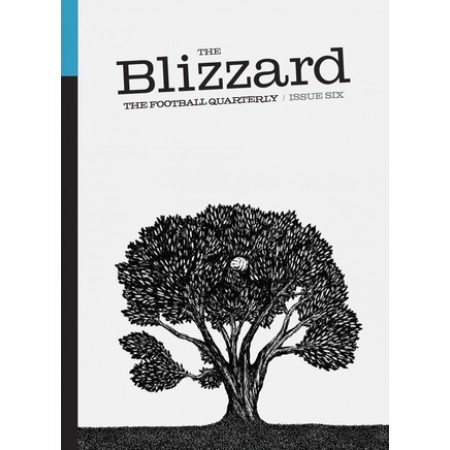 “…The Blizzard was born in Sunderland in March 2010…”, so pronounces Jonathan Wilson in the Editor’s Note from Issue Six of this Quarterly football publication. So as this fledgling journal approaches its third birthday, there were a number of questions that sprung to mind as I set about this review. What was the reasoning behind the creation of The Blizzard? How did it get its title? And finally, is there room in the market for more football writing?
“…The Blizzard was born in Sunderland in March 2010…”, so pronounces Jonathan Wilson in the Editor’s Note from Issue Six of this Quarterly football publication. So as this fledgling journal approaches its third birthday, there were a number of questions that sprung to mind as I set about this review. What was the reasoning behind the creation of The Blizzard? How did it get its title? And finally, is there room in the market for more football writing?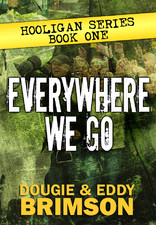 Dougie and Eddy Brimson’s first book of their Hooligan series sets out to explain the phenomenon of football hooliganism; “who causes violence, why, how and when they do it; about what can be done and by whom to try and stop it” and it is also a robust defence of football fans against lazy journalism and stereotyping.
Dougie and Eddy Brimson’s first book of their Hooligan series sets out to explain the phenomenon of football hooliganism; “who causes violence, why, how and when they do it; about what can be done and by whom to try and stop it” and it is also a robust defence of football fans against lazy journalism and stereotyping. Chris Winter is a Crystal Palace fan who has watched his beloved team since 1969 and which have given rise to two books. The first
Chris Winter is a Crystal Palace fan who has watched his beloved team since 1969 and which have given rise to two books. The first